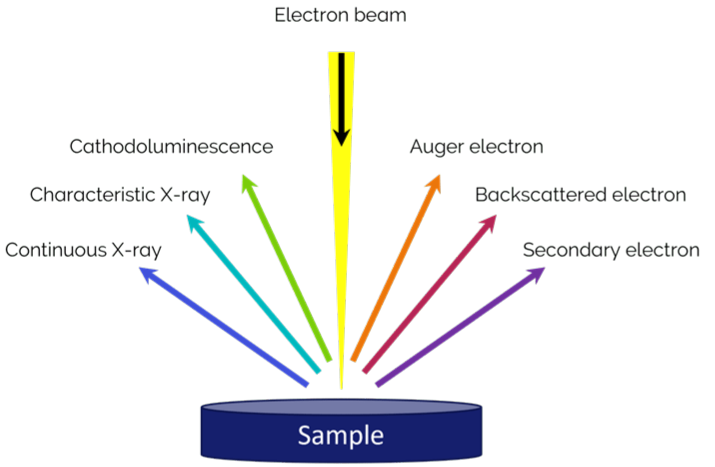What is EDS/EDX Analysis?

EDS/EDX (Energy Dispersive X-ray Spectrometer) is a technique for elemental and compositional analysis based on the information from the X-rays produced by electron irradiation. When a vacancy is created in the electron orbital of the inner shell of a constituent atom by an incident electron, electrons with a higher electron level are transferred from the outer shell to stabilise it.
The X-rays emitted in this process are called characteristic X-rays and have a specific energy value for each element. From the energy of the characteristic X-rays obtained, the presence of the elements (4Be to 98Cf) in the sample can be identified in a few seconds (qualitative analysis). The intensity of the characteristic X-rays can also be used to measure the content of each element (quantitative analysis) and to analyse segregation within the field of view (X-ray mapping). The latest systems also provide dynamic imaging of the distribution of elements fast enough to allow live, interactive microscopy (Live Chemical Imaging); for EDS that works as samples move, microscope settings are changed or samples are modified during In-situ experiments (Live Chemical Imaging).
Image showing generation of characteristic X-rays

Silicon drift detectors (SDD), which do not require liquid nitrogen cooling, are now the most common type of detector and are widely used due to their ease of maintenance and short analysis times. The spatial resolution of the X-rays depends on the scattering of the reflected electrons inside the sample and is generally considered to be 100s of nm to a few μm, but in recent years, by using thin film processing or a windowless SDD in combination with very low acceleration voltages (up to 2 kV), analyses at the level of ten nm have been carried out. Windowless SDD can also be used to detect lithium (3Li) and is therefore being used in the development of lithium-ion batteries.
Image shows an EDS/EDX spectra








